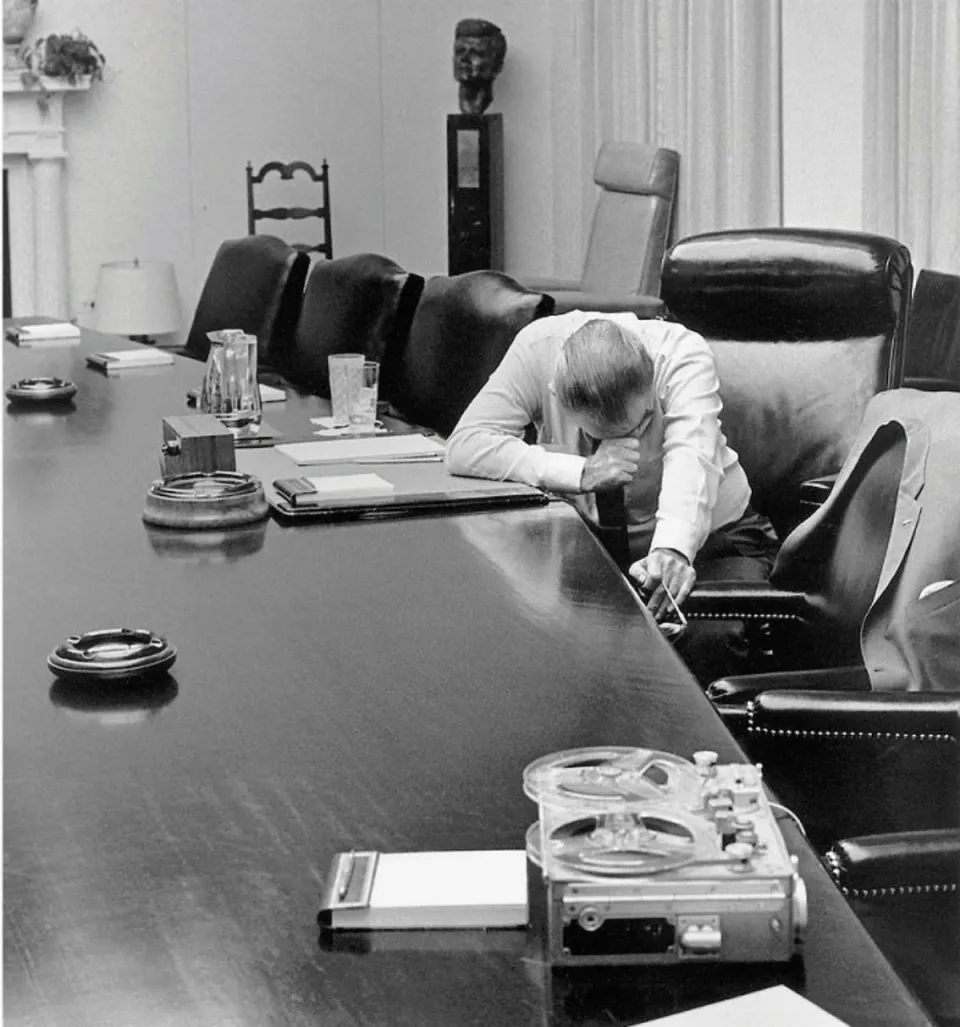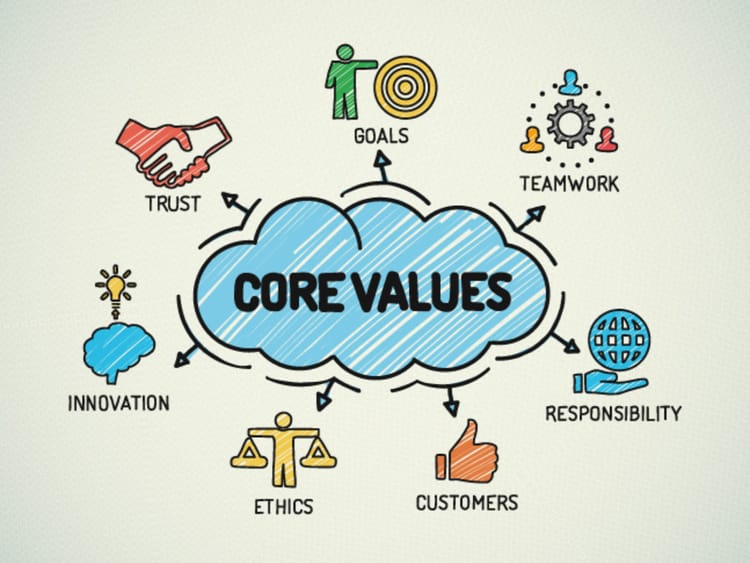Can we talk about relentless goal pressure?

A few years ago, I worked with an executive in the US. He told me how his company tended to increase its revenue target in an automatic way every year. They bumped it up between 5-10% in each annual cycle, based on the results of a tense internal debate in which aspiration and market-based realism fought for supremacy. At the time I worked with this executive, the market dynamics for their organization were very negative. Regardless, senior executives, in the same reflexive way as in the past, ratcheted up the budget target for the following year. It was fantasy from the start. Based on the market, there was no hope to reach the goal. Just a couple of months into the new year, first dread, then helplessness set in amongst the team, like a fog that enveloped them and would not lift. My client did his best to keep morale high. He worked to advance strategic projects. He supported and developed his direct reports. He toiled long hours. He travelled all the time. He made it his mission to preserve every inch of market share, to keep the company’s losses to a minimum in what everyone understood would be a bad year. In such a period, success could only be measured by minimizing failure, however ‘the budget’ could only register expected goal achievement, not a heroic prevention of loss. As expected, in the end they missed their number, by a mile. It was never close. So it was with great interest and some trepidation, that my client stepped into his end of year performance review. His boss said “I have to give you the lowest performance rating.” But the goal was never realistic, never tethered to reality. “You didn’t make your number.” But the market is down, that’s what drove the result. “You didn’t make your number.” But what about these other valuable, strategic accomplishments I contributed to? “You didn’t make your number.” My client protested to his HR leader. No progress. He pleaded his case to his boss’ boss. Definitely no progress.
The pursuit of this impossible goal, the relentlessness of the pressure to grasp a mirage of an objective, and the powerlessness I imagine this leader felt, reminded me of a quote from former US President Lyndon Johnson. Faced with the dilemma of trying to extract the US from an intractable war in Vietnam, he confided to one of his aides in 1964, saying “I feel like a hitchhiker caught in a hailstorm on a Texas highway. I can’t run, I can’t hide, and I can’t make it stop.”
I have one more story on this theme, this one much shorter.
I spoke with another executive in the last year, and he told me, “when I took this job, a senior executive said to me, ‘you need to understand that your job in this role is to make money, and that it will never… be… enough. It will never be enough.’”
Goal pressure is a fundamental feature of organizational life, and I would argue an essential contributor to successful leaders and companies. But in my own professional experience over the last few years, I’ve noticed several examples of goal pressure becoming relentless to the point of demotivating workers and leaders. This is an awkward subject to broach. Addressing it might create the impression that you’re opposed to progress, hard work, ambition, or drive - all admirable characteristics. No, this is different. I’m referring to cases where the drive for results passes a threshold or tipping point, beyond which it becomes unrelenting, unabating, with no end in sight, and reduces the motivational energy of others.
A discussion of unrelenting tension begs the criticism, ‘well what are leaders supposed to do instead?’ It’s a fair point. Leaders by definition need to set direction and goals. Their job, in large part, is to challenge, push, or pull their organizations to go places they may not think they can go, to accomplish things many haven’t conceived. If they don’t push, who will? I’m not denying the need, even the obligation of leaders to set goals, to enlist others in difficult, even painful journeys to achieve something great. Rather, I’m describing cases where the goal pressure becomes too intense, or unending.
Here are some examples of how I’ve seen goal pressure morph from a positive stimulant, into a negative and relentless force that erodes people and results:
- Too much stretch in a single goal: In a previous article, I wrote about the phenomenon of stretch goals. They’ve been defined as goals with a perceived 0% chance of accomplishment, given available knowledge and strategies. Stretch goals create a self-generated internal crisis within a company, forcing a stressful and often chaotic search for new knowledge and strategies. Famous executives and management gurus testify to the value of such extreme goals, and in fact there are memorable examples of these kinds of objectives generating remarkable results. But they are incredibly risky. If the team doesn’t believe in them, they become motivational poison. People will either rescind their commitment because the goal lacks realism, or high performers will sacrifice anything to achieve the impossible, and risk burnout. A core challenge for leaders is to find ‘the line’ up to which they can challenge others, peer over the edge of it, but not cross it.
- Too much cumulative goal pressure: Sometimes leaders might set a single goal with too much stretch. Other times, however, relentless goal pressure arrives as a clutter of moderately difficult goals. This often happens by adding new tasks, without subtracting old, redundant, or non-valued ones. “Everything is important, so we can’t remove anything from our plates.” Goal and task proliferation might also happen due to leaders misperceiving the amount of time needed to complete a task. “This should only take a few hours, it’s not hard, that person can do it tomorrow, they don’t need to give up other priorities.” In reality, the task may be more complex or time consuming than anticipated. Or the leader may not appreciate the full breadth of the team member’s other responsibilities.
- Setting difficult goals without proportional resource allocation: Sometimes organizations set challenging goals, but don’t accompany them with proportional resources or supports to facilitate their achievement. There’s an interesting phenomenon at play here: people perceive difficult goals accompanied by significant resources and support as easier; people perceive easier goals accompanied by few resources and supports as harder. In other words, resource allocation and support exert a major influence on how much tolerance people feel in the face of pressure.
- Ignoring the current context: As mentioned, companies can ratchet up goal targets in an automatic way, without using more nuanced thinking. There could be many reasons for this. They may yearn for the comfort of consistency, by sticking with routine and habit. They may assume the trajectory of past successes will continue in the future. Or they may set a target to affirm their identity (‘we are a high-performance company, so we grow revenue every year, that’s who we are and what we do’). Crucially, this mechanical and pre-determined goal setting approach may sacrifice a thoughtful consideration of the context. What’s happening in the market? What other change initiatives are taking place in the company, and could they impact a willingness to pursue this goal? How fatigued is the team right now due to chasing other competing demands or bold goals?
- Changing the goal too often: Sometimes I’ve noticed leaders who set a goal, convince their team to pursue it, watch them progress towards it, and then change the goal before it can be achieved. This may be unavoidable in many cases, since if conditions change, the goal should as well. However, sometimes organizations or leaders may pivot for less substantive reasons, like chasing a more attractive or aspirational idea, or a more 'perfect’ solution. When I’ve seen this happen, I see several impacts on team members. First they may feel the effort and progress they invested towards the previous goal was lost, wasted, or even squandered due to the leader’s fickleness. Second, team members may feel a loss of trust and faith in the leader, even a sense of betrayal. Once that relational bond fractures, leaders may find it very difficult to influence and animate others. Third, team members may feel that changing the goal ‘lengthens the distance of the race,’ making the objective appear even more unachievable or unending.
- Too much criticism: Another form of relentless goal pressure is non-stop criticism. No matter how hard the team works, or how polished the work product they produce, they receive criticism that it’s not quite good enough. Sometimes this emerges when a company defines its identity and culture as high-performance, and starts equating praise and a recognition of wins with complacency and indifference to achieving excellence.
- Too long-term an orientation: Another kind of relentless goal pressure involves setting targets with too long of a time horizon. If the target is too long-term, team members may feel that any progress they make is miniscule in relation to the overall project scale. If they can’t ‘feel’ any progress, this may contribute to the experience that the goal is overwhelming.
Some readers may assume I’m leveling a critique at leaders, questioning their judgement and decision making, and taking the side of ‘labour,’ team members, or individual contributors. But 99% of the people I work with are leaders. Most of my conversations and observations on this topic involved leaders being on the receiving end of relentless goal pressure. So the issue of unrelenting goal pressure impacts everyone, at all levels.
What’s the impact of unrelenting goal pressure? For senior level leaders, at least, they’re used to feeling like winners. They’ve risen to a rare altitude in their careers, with resumes that tell the story of their many victories. Depriving them of the opportunity to feel successful may feel disorienting, and they may look elsewhere to seek the ‘winning’ experiences that validate the way they view themselves.
So what’s the answer? On one hand leaders need to challenge their teams, and refusing to do so would be an abdication of a core responsibility. And yet they can’t challenge so much, or so often, that they demotivate others. Here are some thoughts on how leaders might set challenging goals without creating an environment of unrelenting goal pressure:
- Be selective: Leaders could be selective about the bold goals they set for others. Everything can’t be important, all the time. Leaders should condense the number of challenging goals they set for their teams, and allow them to spend more time and energy on fewer bold goals. Doing so requires strategic thinking, and discipline on the part of the leader.
- Discard irrelevant goals/tasks: Leaders could convene periodic meetings with their team members for the purpose of shedding irrelevant goals/tasks. Seek and destroy surplus tasks, goals, objectives that contribute little or no value. And resist the urge to contribute to the cumulative goal pressure team members feel, by subtracting (not just adding) goals.
- Keep goals consistent: Once the team aligns on the goal, unless a cataclysmic event occurs, stick to it. Ask yourself, has enough really changed to warrant a shift in approach? Can I still make a case for following through and seeing this to the end? Resist the urge to tinker if possible. Keeping goals consistent gives team members a chance to feel a moment of reinforcement and relief in the aftermath of achieving them.
- Attend to the context before setting the goal: Knowing the context helps leaders engineer the goal with the right degree of challenge. What’s the recent track record of the team?... Are they on a winning or losing streak? What else is happening in the organization?... Is considerable change causing fatigue, or is a steady-state creating pent up energy? What kind of slack resources are available?... Significant resources or support, or are people ‘on their own’? The context whispers clues to leaders about how much challenge they can infuse into goals.
- Allocate resources and support to buffer challenge: Resource allocation and support makes hard goals easier. Few resources and supports makes easy goals harder. When setting a challenging goal, accompany it with significant support.
- Try setting difficult but very short term goals (e.g., 100 day plan): A coach of a national-level cycling team told me that he found it useful to set very difficult goals for his team, but with very short time horizons. (He said the US Navy Seals use a similar principle in their training.) With this approach, leaders can infuse significant challenge into goals, yet maintain a veneer of realism because the time frame is so short. Or, perhaps team members do indeed perceive the goals as hard – they harbour no illusions about their difficulty – but they say to themselves, ‘well at least the pain will be over quickly, so I can do it.’ A corporate example of this might be the '100 day plan,' where a leader challenges their team to achieve something difficult, but with an end point (and perhaps a rest interval) in sight. If you can see the finish line, perhaps anything feels possible.
Goals, pressure, and tension are essential ingredients of organizational success. Leaders need to challenge teams beyond their comfort zones, otherwise they’re not leading, they’re just caretaking. But as leaders and organizations, can we apply goal pressure in more selective, disciplined, thoughtful, and supportive ways? I think we can.
Tim Jackson Ph.D. is the President of Jackson Leadership, Inc. and a leadership assessment and coaching expert with 17 years of experience. He has assessed and coached leaders across a variety of sectors including agriculture, chemicals, consumer products, finance, logistics, manufacturing, media, not-for-profit, pharmaceuticals, healthcare, and utilities and power generation, including multiple private-equity-owned businesses. He's also worked with leaders across numerous functional areas, including sales, marketing, supply chain, finance, information technology, operations, sustainability, charitable, general management, health and safety, quality control, and across hierarchical levels from individual contributors to CEOs. In addition Tim has worked with leaders across several geographical regions, including Canada, the US, Western Europe, and China. He has published his ideas on leadership in both popular media, and peer-reviewed journals. Tim has a Ph.D. in organizational psychology, and is based in Toronto.
Email: tjackson@jacksonleadership.com
Web: www.jacksonleadership.com
Newsletter: www.timjacksonphd.com






Member discussion